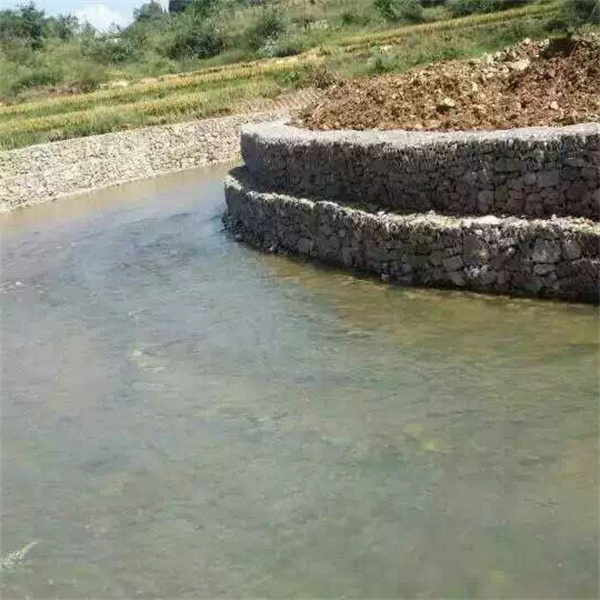nov. . 11, 2024 23:09 Back to list
gabion box price
Understanding Gabion Box Pricing Factors and Market Trends
Gabion boxes, typically constructed from galvanized steel wire and filled with rocks or other materials, have gained widespread popularity in construction, landscaping, and environmental applications. These sturdy structures are used for retaining walls, erosion control, and decorative garden features. As with any construction material, the cost of gabion boxes can vary significantly based on several factors. In this article, we will explore the factors affecting gabion box pricing, current market trends, and tips for making informed purchasing decisions.
Key Factors Influencing Gabion Box Prices
1. Material Quality The price of gabion boxes is heavily influenced by the quality of materials used in their construction. Higher-quality wire, typically made from heavy-gauge steel and coated for corrosion resistance, will increase the price but also enhance the longevity and durability of the structure.
2. Size and Design Gabion boxes come in various sizes and configurations. Standard sizes are often more economical due to bulk manufacturing processes. However, custom sizes or unique designs will generally command higher prices due to additional labor and material requirements.
3. Fill Material The type of fill material used within the gabion box can significantly impact the overall cost. While rocks may be a more economical option, using specialized materials—such as recycled concrete, glass, or decorative stones—can lead to a higher price.
4. Manufacturing Process The method of production can also play a role in pricing. Gabion boxes that are machine-made may be less expensive than those that are handcrafted, as the latter can involve more labor-intensive processes.
5. Shipping and Handling Depending on the source of the gabion boxes, shipping costs can vary. Locally sourced materials may reduce transportation expenses, while international imports can incur significant shipping fees. Additionally, large gabion boxes can be bulky, leading to higher logistics costs.
6. Market Demand The price of gabion boxes can fluctuate based on market demand. Economic factors, seasonal trends, and regional construction activity can affect pricing. For instance, during peak construction seasons or particularly high-demand periods, prices may increase.
7. Supplier and Retailer Variability Different suppliers and retailers may offer varying prices based on their purchasing power, market strategy, and operational costs. It is essential for consumers to compare prices from multiple sources to ensure they are getting the best deal.
gabion box price

Current Market Trends
As of late 2023, the demand for gabion boxes has seen a notable increase, driven by the growing awareness of sustainable construction practices and the need for effective erosion control methods. Landscapers and builders are recognizing the aesthetic and functional benefits of gabion structures, leading to an uptick in orders and consequently affecting pricing.
Furthermore, the rising costs of raw materials influenced by global supply chain issues have led to increased prices for gabion boxes. As steel prices fluctuate, this directly impacts the cost of gabion units, making it necessary for consumers to plan and budget effectively.
Tips for Purchasing Gabion Boxes
1. Research and Compare Before making a purchase, conduct thorough research and compare prices from various suppliers. Online platforms can provide a broad perspective on price ranges and available options.
2. Consider Bulk Purchases If you plan to undertake a large project, buying in bulk can often lead to significant cost savings. Many suppliers offer discounts for larger orders.
3. Check Quality and Specifications Ensure that the gabion boxes meet your project requirements in terms of size, material quality, and design. Investing in a higher quality product can save costs in the long run by reducing the need for replacements.
4. Evaluate Shipping Costs When comparing prices, account for any shipping costs that may apply to your order. Local suppliers may provide more favorable shipping terms.
5. Consult with Professionals If possible, seek the advice of landscape architects or construction professionals who can help you understand the most suitable options for your specific needs.
In conclusion, understanding the pricing dynamics of gabion boxes involves considering various factors such as materials, size, market demand, and supplier differences. By being informed and strategic in purchasing, you can find the right gabion boxes for your project at a competitive price.
-
Why PVC Coated Gabion Mattress Is the Best Solution for Long-Term Erosion Control
NewsMay.23,2025
-
Gabion Wire Mesh: The Reinforced Solution for Modern Construction and Landscape Design
NewsMay.23,2025
-
Gabion Wall: The Flexible, Seismic-Resistant Solution for Modern Landscaping and Construction
NewsMay.23,2025
-
Gabion Wall Solutions: The Durable, Decorative, and Affordable Choice for Every Landscape
NewsMay.23,2025
-
Gabion Basket: The Durable and Flexible Alternative to Traditional Retaining Walls
NewsMay.23,2025
-
Gabion Basket: The Proven Solution for Slope Stability and Flood Control
NewsMay.23,2025
-
Versatility of Chain Link Fence Gabion
NewsMay.13,2025






